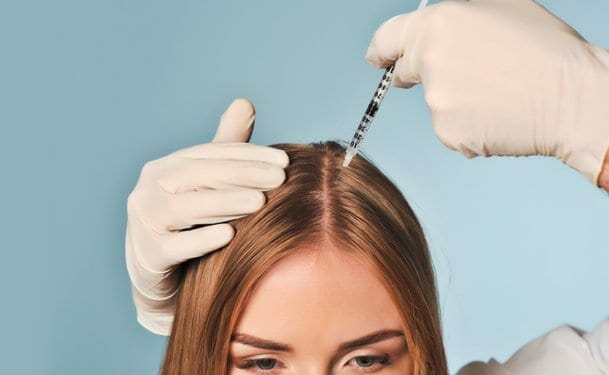Our blood is made of two main components: Red blood cells, and plasma. The plasma contains white blood cells and platelets, which are rich in growth factors. When growth factors are introduced into regions of cycled growth, they in turn help stimulate the activity of the region. In this case, growth factors interact with hair follicles and promote new hair growth. Platelet rich plasma (PRP) contains many growth factors that stimulate the hair follicle’s growth.
The Process
As with most procedures, there is a careful process involved in using PRP for hair regrowth, beginning with a standard blood draw from the patient’s arm. Next, the tube of blood is put into a machine called a centrifuge, which spins the blood tube to separate out the red blood cells from the plasma. The plasma, rich in platelets, is then available at a high concentration and is then injected directly into the scalp at the level of the hair follicles
The process is meticulous — with injections beginning across the scalp, approximately at every half inch over the area of thinning hair — but typically, the entire procedure takes less than a half hour. An anesthesia block is given to nerves of the scalp so the patient does not feel any pain. The highly concentrated PRP is then injected into the scalp. The patient’s hair is then washed and the patient may drive home without any assistance. No sedation or any medication is given during the procedure to inhibit the ability to drive or use machinery.
Who It Works For
Anyone experiencing hair loss is essentially a good candidate for PRP treatments, but those with early hair loss tend to respond best. PRP is best used for patients with androgenic alopecia, which is a genetically determined type of hair thinning that typically occurs along the top of the head. In women, this might look like a widening part with normal hair thickness at the back of the head. PRP therapy works better if your hair loss is recent. It is more challenging to “wake up” hair follicles that have been dormant for a long time
Ruth Swissa
PROUD MEMBER OF:







